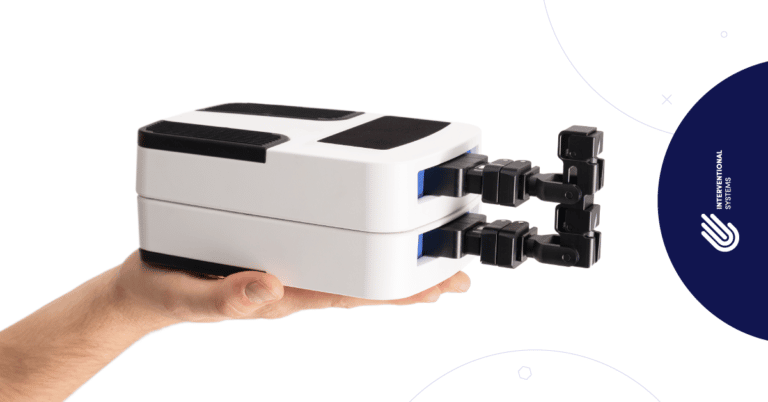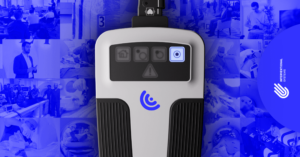We started this Value-Based Robotics series by analyzing the several barriers to the adoption of Robotics in Healthcare. Then, we highlighted the evidence on Micromate™’s clinical benefits. In this post, we’re showing how we differ from other robotic solutions that require “too much physical space”.
Having wheels does not mean it is portable or safe
A plethora of robotic solutions for computer-assisted and image-guided surgery has been released over the years. Most of them have something in common: they are on wheels.
However, having wheels does not mean they are portable robotic solutions. Often their large footprint and weight have them bound to a specific operating or interventional room. It is even common for hospitals to create dedicated rooms for robotic interventions, among other impactful infrastructural changes.
Having wheels is not only unpractical but also safety-critical. The robot and the patient are not in the same coordinate system, which means that undesired patient movements relative to the robot’s position create a displacement that can result in a hazardous situation.
Companies providing robotic solutions try to mitigate this risk by creating a mechanical bridge between the robot and the table (which is still an unsafe approach, given recent FDA recalls), along with either mechanically linking the navigation system’s camera and the patient’s anatomy through a percutaneous pin or screw or using a dynamic reference frame. Such an invasive approach is almost like a second intervention, not to mention it is very inaccurate when it consists of skin markers since the relative motion of the skin and the inner organs are non-linear and non-predictable.
Some other companies solve this problem by using a patient-mounted robotic approach. This approach has substantial limitations, such as reduced flexibility on setup and target locations or a non-linear relationship between robot displacement and target displacement caused by patient breathing, which cannot be accurately predicted or compensated for without live imaging. We have also patented technology on a patient-mounted approach, but we believe that it is only useful for MR-guided interventions, which have severe limitations on space because of the very small diameter of the MRI bore, and whose risks can be addressed with non-radiating, highly accurate, real-time MR imaging.
Fitting inside the gantry and live imaging
Micromate™ is small, almost the size of a standard external hard drive. With its 2kg and a footprint of around 17x12x8cm, it is table mounted using a flexible and lightweight but very stable positioning arm. The setup time is less than 5 minutes and done only once during the procedure. The figure below showcases Micromate™’s substantial advantages when compared with the most widespread solutions:
The picture on the left shows Micromate™ guided biopsy on the parotid gland and highlights how the flat and compact design of the robot enables live imaging by fitting easily between the patient’s head and the C-arm flat panel. This is a major advantage when compared to what is (im)possible with large robots, as seen on the right.
Micromate™ fits inside the gantry or between the flat-panel of a C-arm and the patient. The physician can use live imaging to ensure a correct alignment to the trajectory, visualize any deviation and compensate for such deviations. Other robots require large reference frames and consist of large industrial-style robotic arms that cannot fit inside the imaging device.
Micromate™ enables 360-degree surgical access, either for actual clinical interventions or to have visibility of the anatomy. Other robots force the physician to stand contralateral to the surgical site and have very complex and unpractical release mechanisms. Moreover, other robots often require microscopes, exoscopes, or endoscopes to provide a virtual rendering of the surgical scene on visible monitors, which increases the cost of the setup and corresponds only to a zoomed portion of the reality.
Final conclusions
Smaller size and lower weight do not only translate into savings when purchasing a robotic system. They are essential for proper physician experience and to enable the highest standard of care to the patient, when it comes to accuracy, involved procedural risk, and recovery times.
Like what happened when we transitioned from mainframe computers to personal computers (PC), moving away from large and bulky robots to a miniature version will change the industry. It will solve all constraints related to practicality and costs, while still providing good service and improving outcomes.
Interventional Systems has pioneered this industry shift and has solved the major barriers to robotics adoption. Micromate™ is the smaller robot for percutaneous procedures with all the features big robots wished they had.





